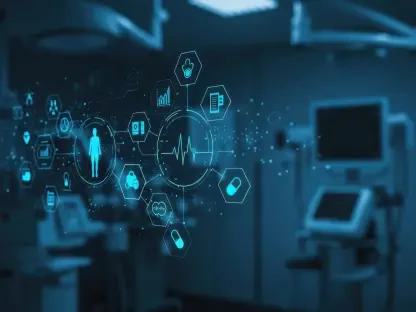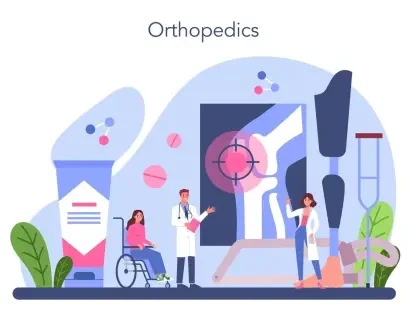In the ever-evolving landscape of healthcare, digital advancements continue to redefine operations and patient care. One such innovation is the Physical Therapy Electronic Medical Record (EMR) software, which has become indispensable in optimizing practice management and enhancing patient care. As healthcare practitioners increasingly embrace technology to drive efficiencies, Physical Therapy EMR serves as a pivotal tool in managing patient interaction and clinic operations. These systems not only streamline various facets of healthcare but also ensure higher levels of accuracy, efficiency, and satisfaction for both patients and providers, making them essential in modernizing therapeutic practices.
Streamlining Documentation and Patient Management
Enhanced Documentation Efficiency
The documentation process in physical therapy practices has significantly transformed with the advent of EMR systems. Traditional paper records often lead to inefficiencies and inaccuracies, primarily due to manual entry errors. EMR software addresses these issues by enabling therapists to create, update, and access patient records efficiently in digital formats. This capability provides instant access to critical patient information while ensuring that records remain complete and accurate. Incorporating templates and customizable forms into the system further reduces the manual workload, allowing practitioners to adapt their notes to meet specific requirements. Overall, this transition to digital documentation saves time, minimizes errors, and enhances the reliability of patient records.
Consolidated Patient Management
Physical Therapy EMR systems facilitate a consolidated approach to patient management by aggregating patient information into a unified platform. Clinicians can access comprehensive patient histories, treatment plans, and progress notes at a moment’s notice, fostering smooth information flow and continuity of care. The integration of scheduling tools within the software simplifies appointment processes, including booking, rescheduling, and cancellations. Automation plays a crucial role here, as automated reminders help reduce no-show rates, thereby optimizing therapist productivity and improving clinic operations. This streamlined management not only empowers therapists to focus on patient care but also enhances the overall efficiency of healthcare delivery.
Ensuring Data Security and Integration Capabilities
Prioritizing Security and Compliance
In healthcare, patient data security and compliance are paramount. Physical Therapy EMR software addresses these critical issues with robust security measures like encryption and user authentication to protect sensitive information from unauthorized access. Moreover, these systems support adherence to regulatory standards such as HIPAA, which builds patient trust and preserves the clinic’s reputation. By maintaining high standards of data integrity and confidentiality, EMR solutions not only shield patient information but also empower healthcare providers with the confidence to manage sensitive data responsibly, ensuring compliance and aligning with the legal frameworks governing healthcare operations.
Advanced Integration Capabilities
A significant benefit of Physical Therapy EMR software is its ability to integrate seamlessly with other healthcare systems, enhancing both functionality and patient care. This includes interoperability with billing systems, practice management tools, and diagnostic platforms, which collectively reduce redundant data entry and streamline service delivery. Integration with telehealth platforms is especially noteworthy, as it allows for remote consultations and ongoing patient engagement, offering patients greater flexibility and accessibility to healthcare services. By bridging these technological gaps, EMR systems encourage a more holistic and comprehensive approach to managing patient care across diverse healthcare settings.
Personalization and User-Friendliness of EMR Systems
Tailoring Treatment Plans
Another critical aspect of Physical Therapy EMR software is its ability to support personalized treatment regimens tailored to individual patient needs. Recognizing that each patient presents unique challenges, EMR systems enable therapists to develop and manage customized treatment plans. These plans are easily adjustable and trackable, allowing therapists to monitor patient progress and modify approaches as needed. Such personalized attention enhances therapeutic effectiveness, boosting patient compliance and improving outcomes. This level of customization ensures that caregivers can implement dynamic treatment strategies that respond to each patient’s evolving condition and treatment response.
User-Friendly Interfaces
Despite the technical sophistication inherent in EMR systems, user-friendliness remains a crucial consideration. An intuitive design with clear labels and smart grouping of elements ensures that the user experience is seamless and efficient. Accessibility features further enhance this experience, making it easy for practitioners to manage patient information and schedules from various locations. This flexibility is essential for clinics with differing operational models, allowing healthcare professionals to access everything they need without obstruction. By streamlining the user interface, EMR solutions empower practitioners with the tools needed to deliver top-tier care without being hindered by complex navigation.
Evaluating Performance and Choosing the Right EMR
Analyzing Performance Through Reporting
Comprehensive reporting functionalities are an invaluable asset of Physical Therapy EMR systems. They provide clinics with the ability to assess performance through data-driven analysis, evaluating trends, effectiveness, and strategic decision processes. By examining patient demographics, treatment impacts, and clinic efficiency, therapists can identify areas for improvement and adapt strategies for better service provision. These insights are essential for ongoing development, ensuring that resources are allocated effectively and care delivery is continuously refined to meet ever-changing patient needs and industry standards.
Selecting the Appropriate EMR Solution
In the constantly changing realm of healthcare, digital innovations are continually reshaping both the operations and the approach to patient care. A standout development in this field is the Physical Therapy Electronic Medical Record (EMR) software. This tool has grown to be a crucial asset in maximizing the efficacy of practice management while simultaneously enhancing the quality of patient care. As healthcare professionals increasingly integrate technology to boost efficiency, Physical Therapy EMR emerges as a key resource for organizing patient interactions and optimizing clinic workflows. These systems streamline multiple aspects of healthcare, ensuring improved accuracy, efficiency, and satisfaction for both patients and healthcare providers. This makes them essential for modernizing therapeutic practices. Through this technology, clinics can manage patient data more effectively and foster better communication, ultimately leading to improved patient experiences and outcomes in the diverse world of physical therapy.









